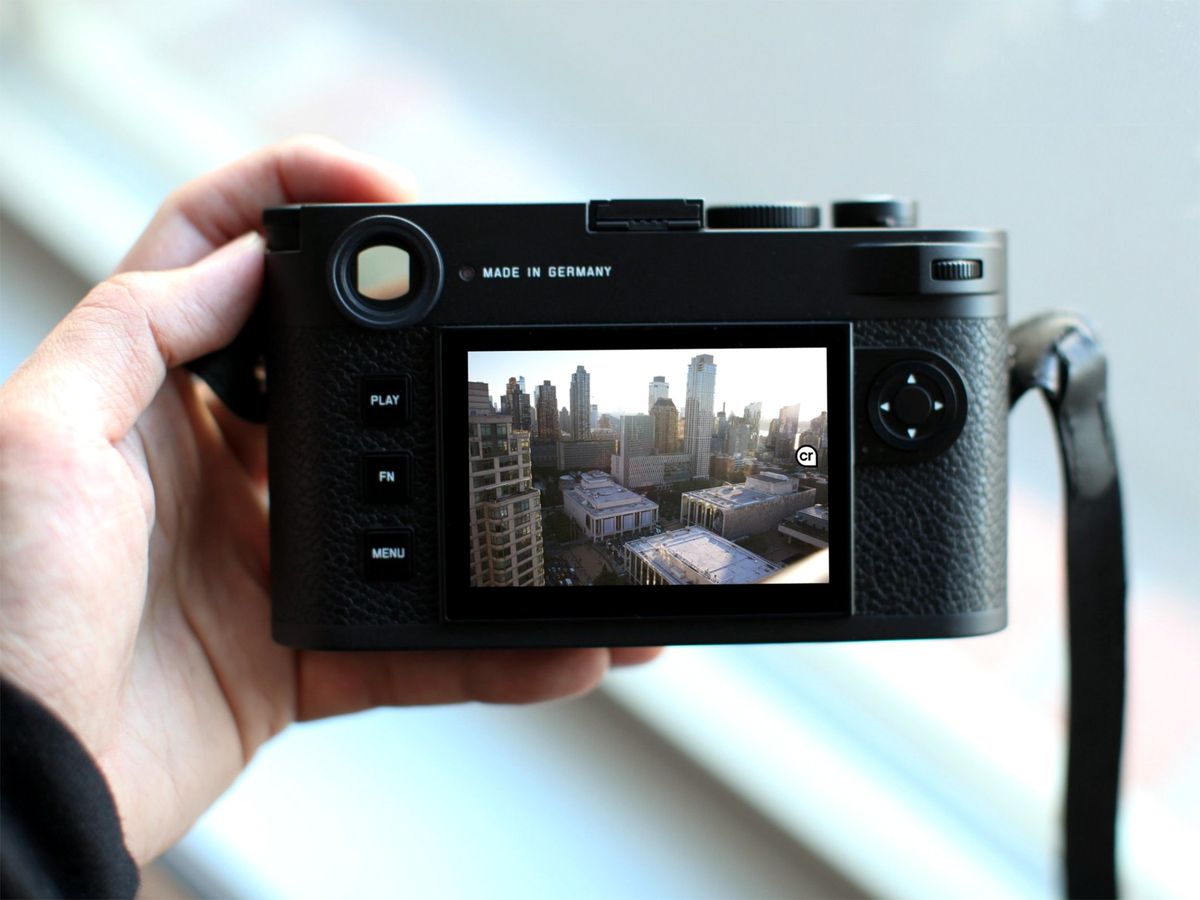Is that photo real?
There’s a new way to answer that question. Leica’s M11-P, announced in late October, is the world’s first camera with support for content credentials, an encryption technology that protects the authenticity of photos taken by the camera. The metadata system can track a photo from shutter snap to publication, logging every change made along the way.
“In the last few years it’s become easier to manipulate pictures digitally. Photographers can do it, and when the photos are out on the Web, other people can do it,” says award-winning photographer David Butow. “I think that puts in jeopardy the strength of photography, the sense that it’s a true representation of what someone saw.”
Solving photography’s authenticity problem
In 2019, Adobe, The New York Times, and Twitter partnered to solve that problem by founding the Content Authority Initiative (CAI) in November. (Twitter left CAI afterElon Musk purchased the company.) CAI, which now boasts over 200 partners, gave itself the difficult task of finding a “long-term, holistic solution” for verifying the authenticity of photos. In 2021 it joined with another initiative called Project Origin to form the Coalition for Content Provenance and Authenticity (C2PA).
Leica’s M11-P is the first hardware embodiment of its solution. The camera has a toggle to flip on content credentials, which is based on the C2PA’s open technical standard. The M11-P then embeds identifying metadata—such as the camera, lens, date, time, and location—in an encrypted C2PA “manifest.” The M11-P digitally signs the manifest with a secure chipset that has a stored private key. The manifest is attached to the image and can be edited only by C2PA compatible software which, in turn, leaves its own signature in the manifest.
Once published, the image can display a small interactive icon that reveals details about the photo, including the device used to take the photo, the programs used to edit it, and whether the image is wholly or partially AI generated.

It’s still early days for content credentials, however, so support is slim. Adobe’s software is the only popular image-editing suite to support the standard so far. The presentation of the data is also an issue: The interactive icon isn’t visible unless an app or program is programmed to present it.
“The way this technology is integrated in Photoshop and Lightroom, which is what I use, is still a bit beta-ish,” says Butow, who used the Leica M11-P for several weeks prior to its release. But Butow says these early problems are countered by one key win: The standard is easy for photographers to use. “You shoot normally, right? There’s nothing that you see, nothing that you’re aware of when you’re taking the picture.”

The Leica M11-P’s support for content credentials wasn’t the only reason it made headlines. It arrived with an intimidating price tag of US $9,195. That’s a high price for authenticity, but Leica says the camera’s cost has more to do with Leica’s heritage. “If you look at the price points for our M cameras, there’s absolutely no added cost to have the content credentials feature in the M11-P,” says Kiran Karnani, Leica’s vice president of marketing.
And the M11-P is just the tip of the iceberg. Canon and Nikon already have prototype cameras with content credentialing support. Smartphones will also get in on the action. Truepic, a startup that builds “authenticity infrastructure,” has partnered with Qualcomm to make Qualcomm’s Snapdragon 8 Gen 3 chips support content credentials; those chips will power flagship Android smartphones next year.
Faster verification means more accurate reporting
No news organization currently requires photographers use content credentials, but the C2PA standard’s influence is beginning to be felt. Karnani points out that The New York Times and BBC are members of the CAI (as are The Wall Street Journal, The Washington Post, the AP, Reuters, and Gannett). “Adoption is certainly a goal,” says Karnani.
The explosion outside a hospital in Gaza on 17 October 2023 underscored how content credentials could make a difference. Early reports pinned the blame on an Israel airstrike. Israel disputed these reports on social media and shared a video that claimed to show the blast was caused by a failed Palestinian rocket, but a New York Times reporter noticed it carried an incorrect time stamp, which cast doubt on its authenticity and bolstered suspicions about Israeli involvement.
“Having the ability to look back at the source and what the original image looks like is really important.” — David Butow, photographer
Other images eventually cast doubt on early headlines. New, verifiable photos and videos led to a report from AP News that said “a rocket launched from Gaza that failed mid-flight” was the likely cause of the hospital explosion. Other publications, including The New York Times and The Washington Post, published independent stories based on new photographic and video evidence that reached mixed conclusions about the blast’s origins (which remain disputed). But verifying the photos and videos, which came from a variety of professional and amateur sources, took days. By then, many people had already formed their opinions about who was responsible.
“When these organizations are working with [photographers] they may not know that well, having the ability to look back at the source and what the original image looks like is really important,” says Butow. Content credentialing, he says, is “a powerful tool that’s going to allow them to do that.”
Matthew S. Smith is a freelance consumer technology journalist with 17 years of experience and the former Lead Reviews Editor at Digital Trends. An IEEE Spectrum Contributing Editor, he covers consumer tech with a focus on display innovations, artificial intelligence, and augmented reality. A vintage computing enthusiast, Matthew covers retro computers and computer games on his YouTube channel, Computer Gaming Yesterday.



